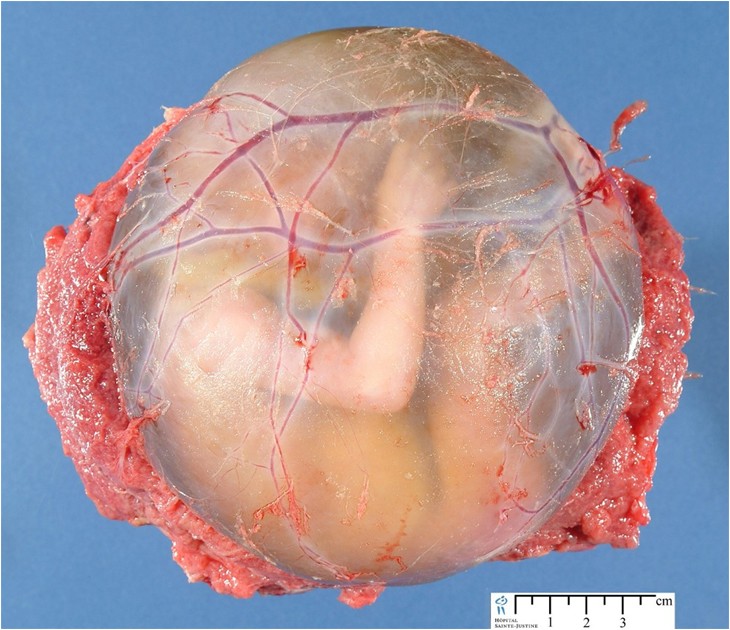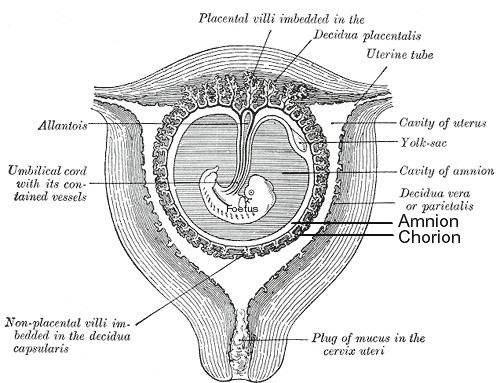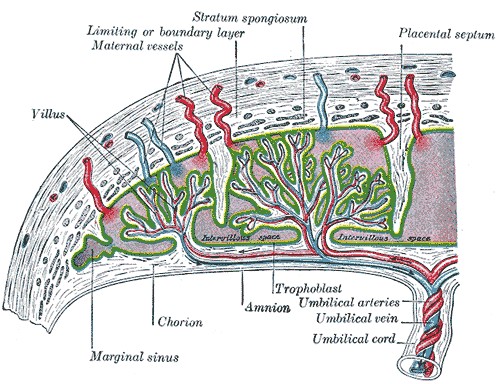The Amnion
Definition
The thin, transparent inner membrane (the chorion is the outer layer) that constitutes the amniotic membranes.
Contain the amniotic fluid
A protective layer for the baby insulating him/her from bacteria in the vagina. Rupture of this sac exposes the child to bacteria in the vagina and increases the risk of infection if the infant is not delivered within about 18 hours.
Labor usually starts shortly after of before rupture of the amniotic membranes.
Amniotic fluid - watery liquid surrounding and cushioning a growing fetus within the amnion. It allows the fetus to move freely without the walls of the uterus being too tight against its body.
Fate of the Amnion
The amnion grows and begins to fill, mainly with water, around two weeks after fertilisation. After a further 10 weeks the liquid contains proteins, carbohydrates, lipids and phospholipids, urea and electrolytes.
The fluid is released when the amnion ruptures - spontaneous rupture of membranes (SRM).
The majority of the amniotic fluid remains inside the uterus until the baby is born.
Complications related to amniotic fluid
o Too little amniotic fluid (oligohydramnios)
o Too much (polyhydramnios or hydramnios)
o In both cases the majority of pregnancies proceed normally and the baby is born healthily.
o Polyhydramnios is a predisposing risk factor for cord prolapse.






